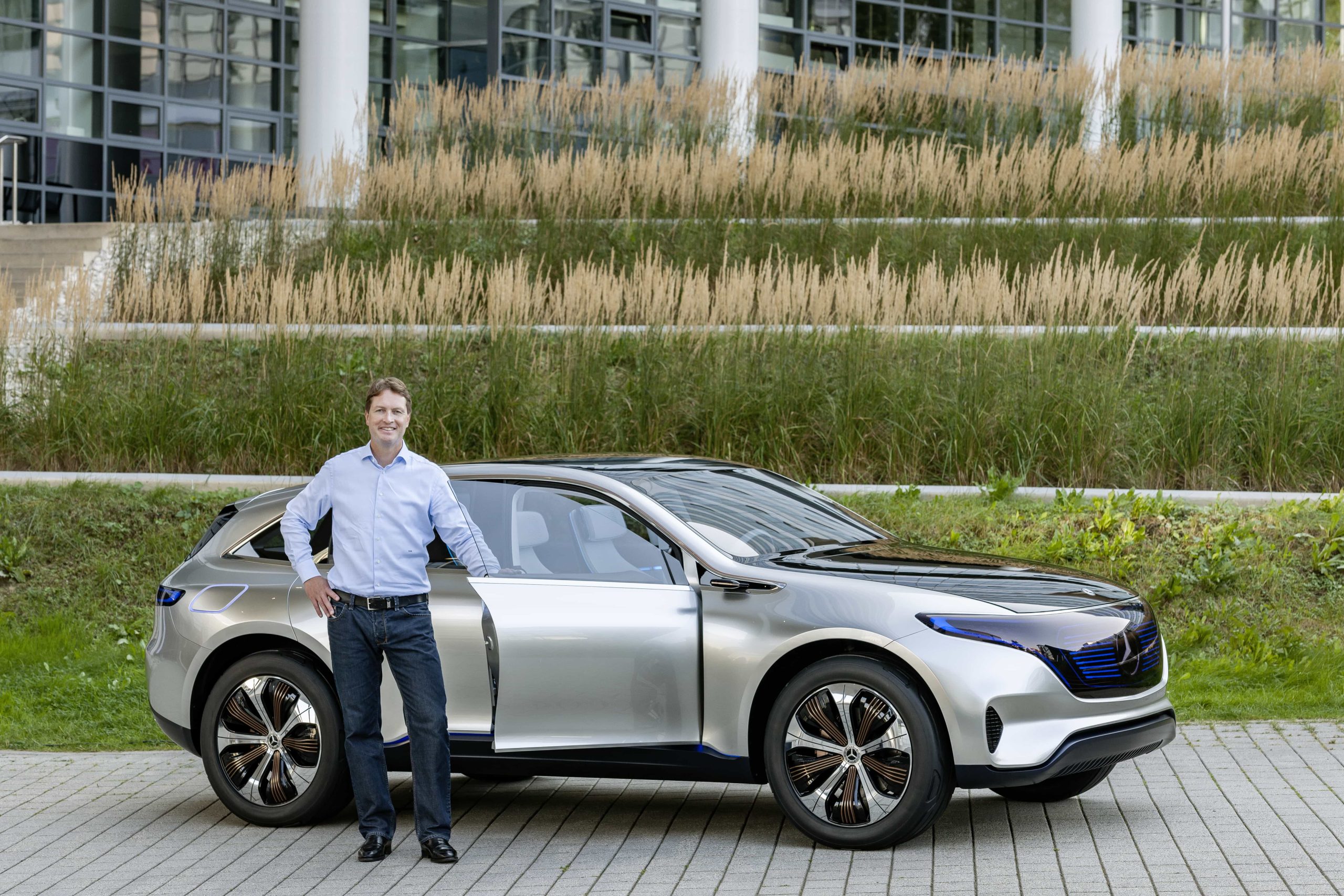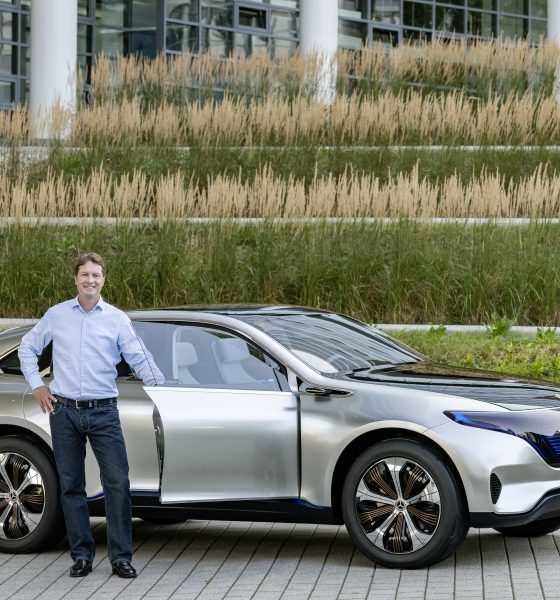Mercedes CEO Ola Källenius has defended his company’s pursuit of electric vehicles instead of investing in synthetic fuel technology, known as “e-fuels.”
Despite governments worldwide putting regulations in place spelling the end for the ICE vehicle, some automakers have attempted to save the technology by using “e-fuels,” or fuels made synthetically. Some, including Porsche and BMW, have even invested in e-fuel production centers, but not everyone is convinced this will be the savior of gas-powered technology. Most recently, the Mercedes CEO has criticized the e-fuels strategy, stating his brand will remain dedicated to a complete electric transition.
The Mercedes executive’s comments were first reported in the German newspaper Frankfurter Allgemeine Zeitung, in which the CEO explained his position on using e-fuel technology instead of electric vehicles. “Mercedes has a strategy that clearly relies on the electric drive. We will not fundamentally change these because of the decisions on e-fuels,” said Källenius. “From 2025, we will be aligning all of our new vehicle architectures solely for the electric drive.”
Further defending Mercedes’ dedication to electric vehicle technology, the CEO argued that electric-drive units are technically superior, able to achieve more power output, better efficiency, improved durability and consistency, and eventually, reduced production cost.
However, despite these advantages, especially over costly e-fuels, which remain prohibitively expensive to traditional consumers, the CEO pointed out one critical hurdle for EVs: charging infrastructure. As noted by Källenius, this concern has driven his company to invest in its charging network, which he argues will be critical to the complete adoption of EVs.
Källenius’ comments come at a pivotal time for Mercedes as it works faster than many of its peers to switch to electric vehicles. Currently, Mercedes offers multiples of the number of electric models that BMW, Audi, and Porsche do. Further, with the unveiling of its final ICE vehicle yesterday, it seems to be ahead of the curve on the development side as well.
It’s the end of an era. Mercedes has unveiled its last new ICE vehicle, the E-Class. What do you think of Mercedes’ current/upcoming electric models? pic.twitter.com/KypgG6FwPg
— TESLARATI (@Teslarati) April 25, 2023
Simultaneously, Mercedes’ top brands are working to double down on the auto giant’s lead. Most recently, Mercedes-Maybach, the automaker’s ultra-luxury brand, introduced its first electric model, the Maybach EQS SUV. Moreover, AMG, the company’s high-performance brand, is introducing an increasing number of electric variant vehicles to its lineup and is expected to release its first true electric sportscar in the near future. Even the business’s commercial wing has introduced its first electric offerings, including an electric semi-truck and electric van.
The dedication of the premium German brand has undoubtedly paid off, as its marketshare and sales, particularly in the luxury electric vehicle market, continue to grow year over year. Hopefully, Mercedes can inspire its luxury counterparts to do the same.
What do you think of the article? Do you have any comments, questions, or concerns? Shoot me an email at william@teslarati.com. You can also reach me on Twitter @WilliamWritin. If you have news tips, email us at tips@teslarati.com!

News
Tesla FSD fleet is nearing 7 billion total miles, including 2.5 billion city miles
As can be seen on Tesla’s official FSD webpage, vehicles equipped with the system have now navigated over 6.99 billion miles.

Tesla’s Full Self-Driving (Supervised) fleet is closing in on almost 7 billion total miles driven, as per data posted by the company on its official FSD webpage.
These figures hint at the massive scale of data fueling Tesla’s rapid FSD improvements, which have been quite notable as of late.
FSD mileage milestones
As can be seen on Tesla’s official FSD webpage, vehicles equipped with the system have now navigated over 6.99 billion miles. Tesla owner and avid FSD tester Whole Mars Catalog also shared a screenshot indicating that from the nearly 7 billion miles traveled by the FSD fleet, more than 2.5 billion miles were driven inside cities.
City miles are particularly valuable for complex urban scenarios like unprotected turns, pedestrian interactions, and traffic lights. This is also the difference-maker for FSD, as only complex solutions, such as Waymo’s self-driving taxis, operate similarly on inner-city streets. And even then, incidents such as the San Francisco blackouts have proven challenging for sensor-rich vehicles like Waymos.
Tesla’s data edge
Tesla has a number of advantages in the autonomous vehicle sector, one of which is the size of its fleet and the number of vehicles training FSD on real-world roads. Tesla’s nearly 7 billion FSD miles then allow the company to roll out updates that make its vehicles behave like they are being driven by experienced drivers, even if they are operating on their own.
So notable are Tesla’s improvements to FSD that NVIDIA Director of Robotics Jim Fan, after experiencing FSD v14, noted that the system is the first AI that passes what he described as a “Physical Turing Test.”
“Despite knowing exactly how robot learning works, I still find it magical watching the steering wheel turn by itself. First it feels surreal, next it becomes routine. Then, like the smartphone, taking it away actively hurts. This is how humanity gets rewired and glued to god-like technologies,” Fan wrote in a post on X.
News
Tesla starts showing how FSD will change lives in Europe
Local officials tested the system on narrow country roads and were impressed by FSD’s smooth, human-like driving, with some calling the service a game-changer for everyday life in areas that are far from urban centers.

Tesla has launched Europe’s first public shuttle service using Full Self-Driving (Supervised) in the rural Eifelkreis Bitburg-Prüm region of Germany, demonstrating how the technology can restore independence and mobility for people who struggle with limited transport options.
Local officials tested the system on narrow country roads and were impressed by FSD’s smooth, human-like driving, with some calling the service a game-changer for everyday life in areas that are far from urban centers.
Officials see real impact on rural residents
Arzfeld Mayor Johannes Kuhl and District Administrator Andreas Kruppert personally tested the Tesla shuttle service. This allowed them to see just how well FSD navigated winding lanes and rural roads confidently. Kruppert said, “Autonomous driving sounds like science fiction to many, but we simply see here that it works totally well in rural regions too.” Kuhl, for his part, also noted that FSD “feels like a very experienced driver.”
The pilot complements the area’s “Citizen Bus” program, which provides on-demand rides for elderly residents who can no longer drive themselves. Tesla Europe shared a video of a demonstration of the service, highlighting how FSD gives people their freedom back, even in places where public transport is not as prevalent.
What the Ministry for Economic Affairs and Transport says
Rhineland-Palatinate’s Minister Daniela Schmitt supported the project, praising the collaboration that made this “first of its kind in Europe” possible. As per the ministry, the rural rollout for the service shows FSD’s potential beyond major cities, and it delivers tangible benefits like grocery runs, doctor visits, and social connections for isolated residents.
“Reliable and flexible mobility is especially vital in rural areas. With the launch of a shuttle service using self-driving vehicles (FSD supervised) by Tesla in the Eifelkreis Bitburg-Prüm, an innovative pilot project is now getting underway that complements local community bus services. It is the first project of its kind in Europe.
“The result is a real gain for rural mobility: greater accessibility, more flexibility and tangible benefits for everyday life. A strong signal for innovation, cooperation and future-oriented mobility beyond urban centers,” the ministry wrote in a LinkedIn post.
News
Tesla China quietly posts Robotaxi-related job listing
Tesla China is currently seeking a Low Voltage Electrical Engineer to work on circuit board design for the company’s autonomous vehicles.

Tesla has posted a new job listing in Shanghai explicitly tied to its Robotaxi program, fueling speculation that the company is preparing to launch its dedicated autonomous ride-hailing service in China.
As noted in the listing, Tesla China is currently seeking a Low Voltage Electrical Engineer to work on circuit board design for the company’s autonomous vehicles.
Robotaxi-specific role
The listing, which was shared on social media platform X by industry watcher @tslaming, suggested that Tesla China is looking to fill the role urgently. The job listing itself specifically mentions that the person hired for the role will be working on the Low Voltage Hardware team, which would design the circuit boards that would serve as the nervous system of the Robotaxi.
Key tasks for the role, as indicated in the job listing, include collaboration with PCB layout, firmware, mechanical, program management, and validation teams, among other responsibilities. The role is based in Shanghai.
China Robotaxi launch
China represents a massive potential market for robotaxis, with its dense urban centers and supportive policies in select cities. Tesla has limited permission to roll out FSD in the country, though despite this, its vehicles have been hailed as among the best in the market when it comes to autonomous features. So far, at least, it appears that China supports Tesla’s FSD and Robotaxi rollout.
This was hinted at in November, when Tesla brought the Cybercab to the 8th China International Import Expo (CIIE) in Shanghai, marking the first time that the autonomous two-seater was brought to the Asia-Pacific region. The vehicle, despite not having a release date in China, received a significant amount of interest among the event’s attendees.










